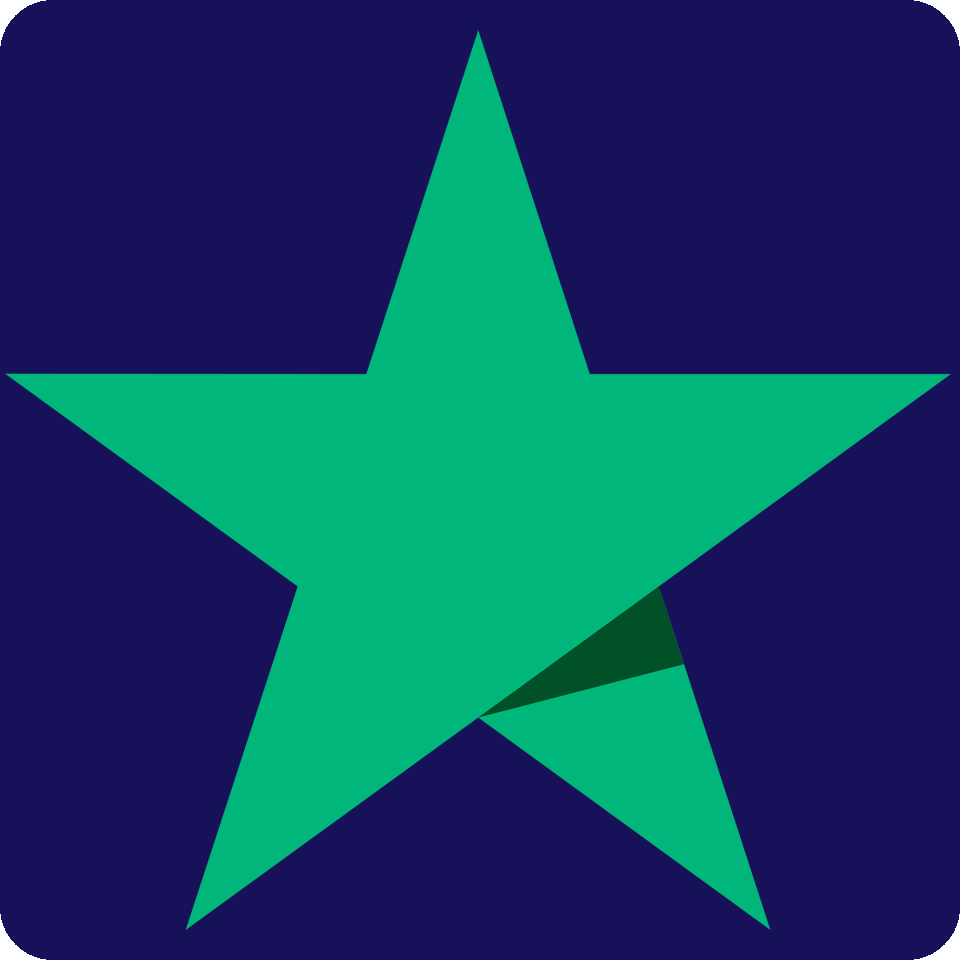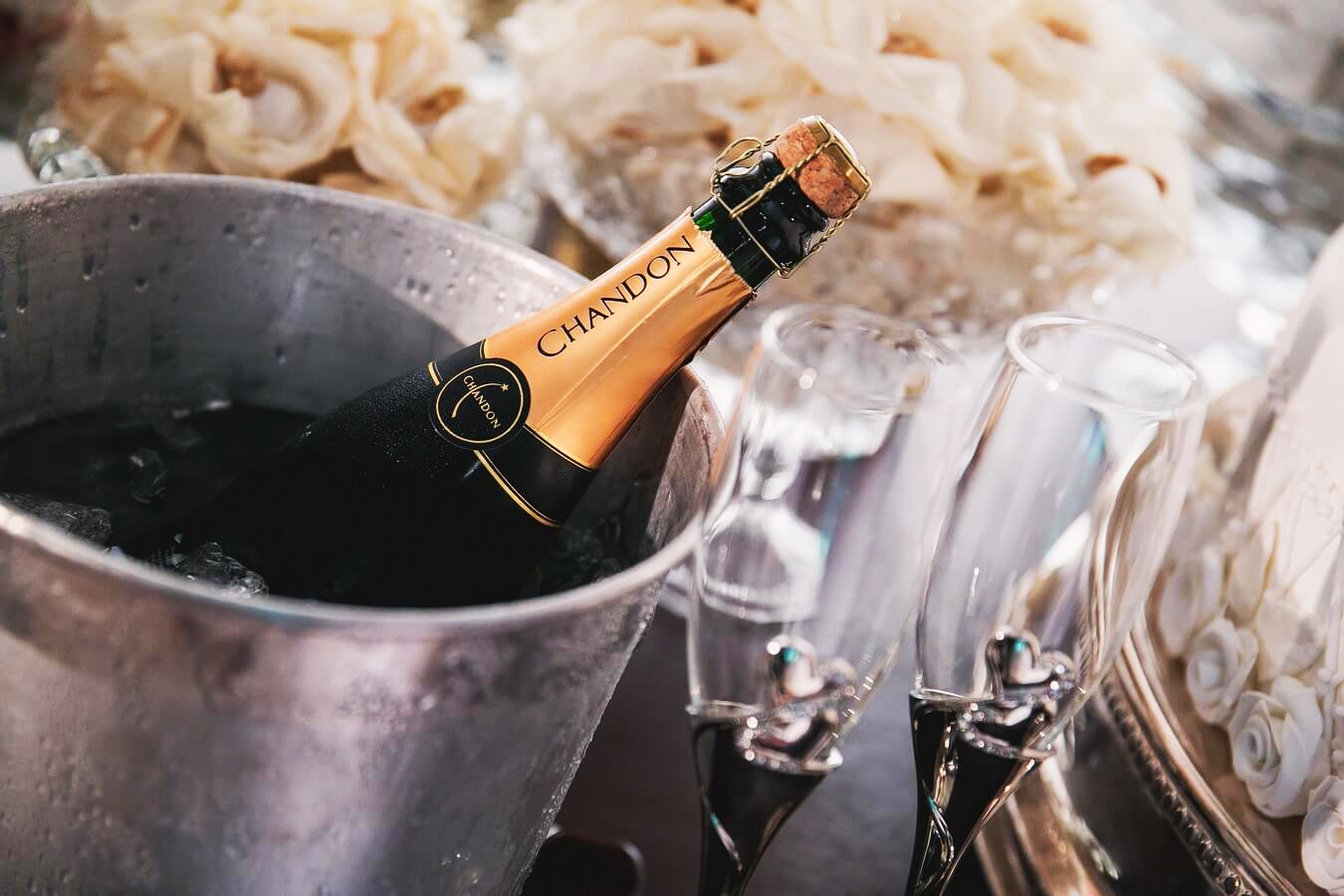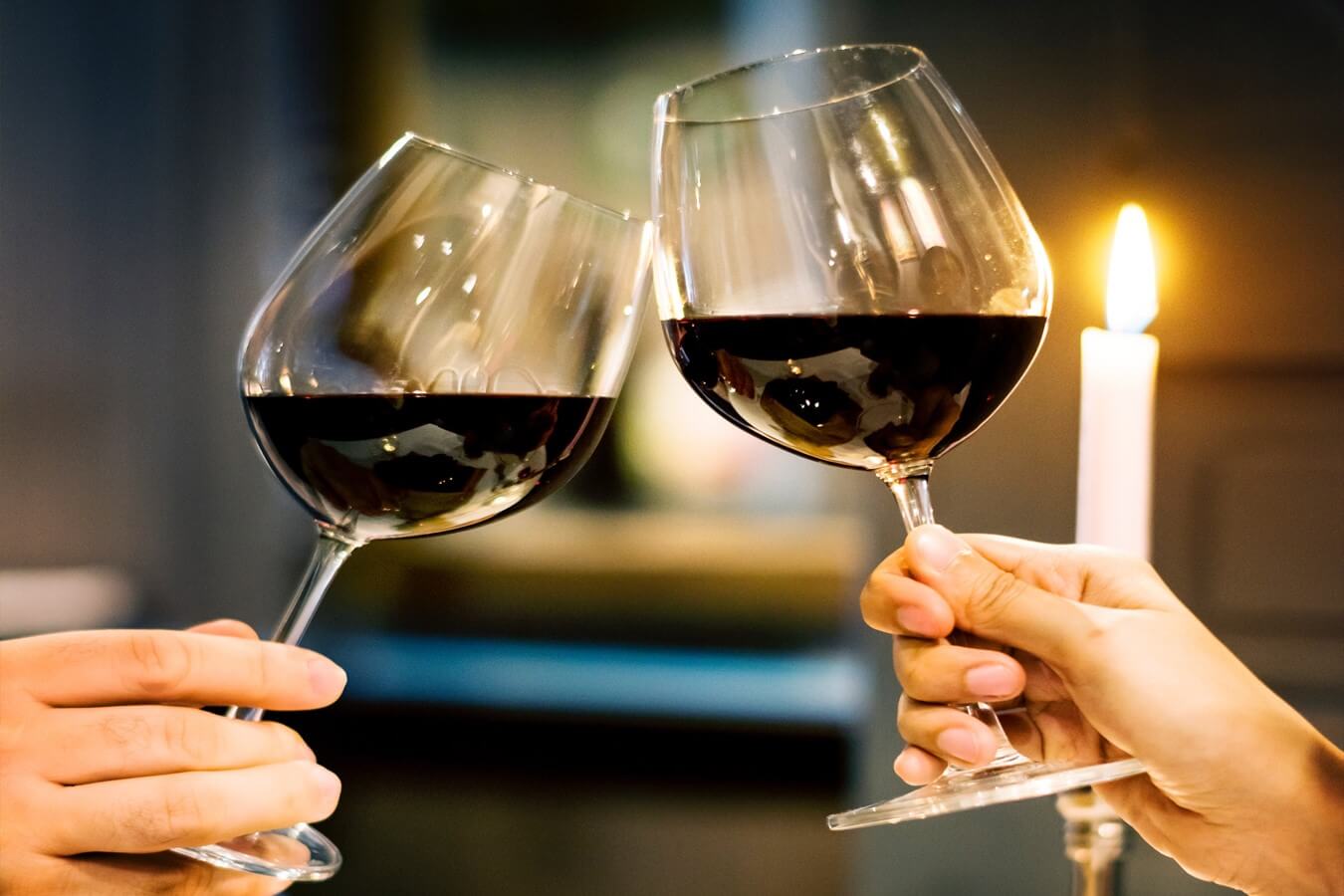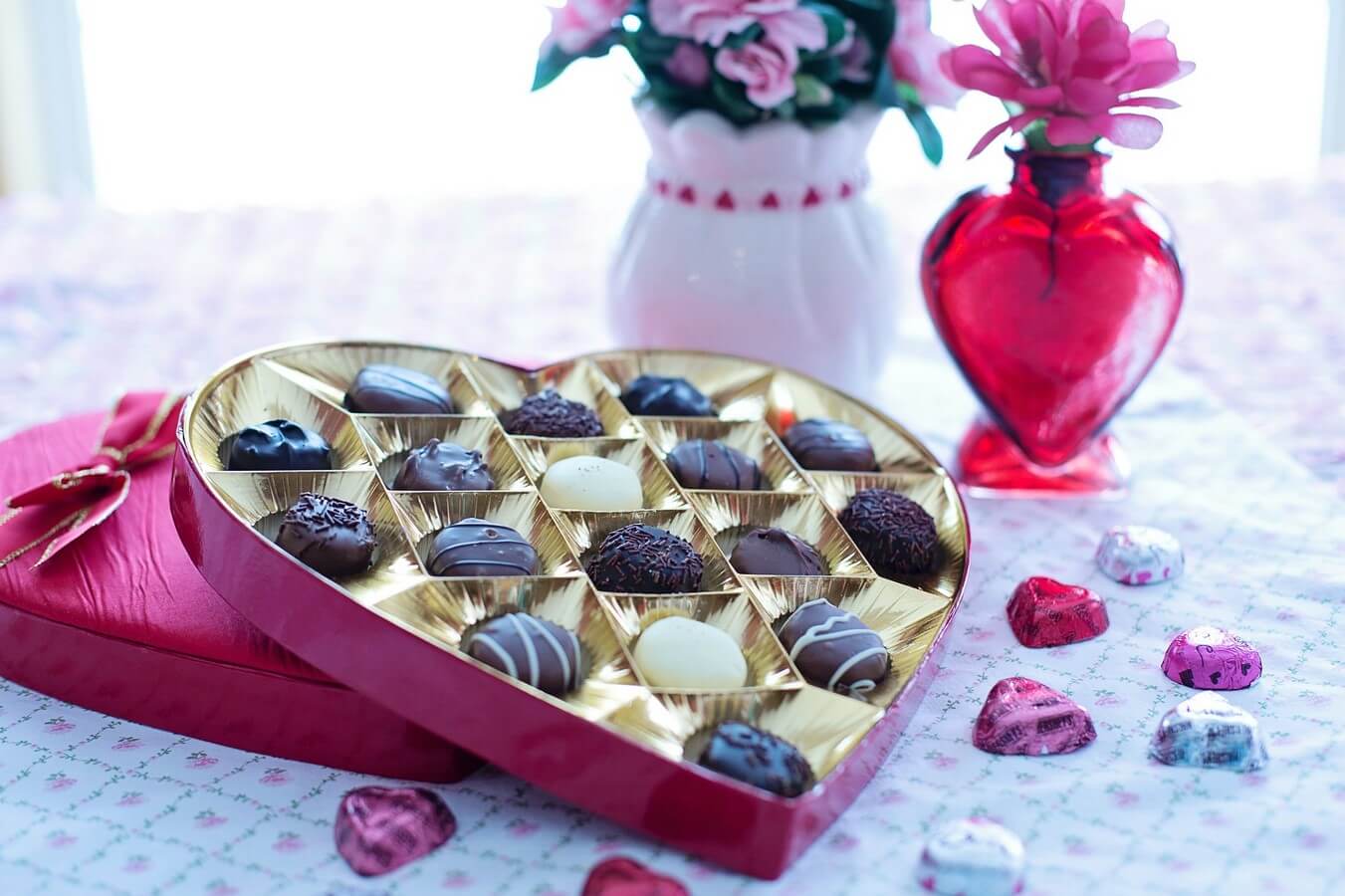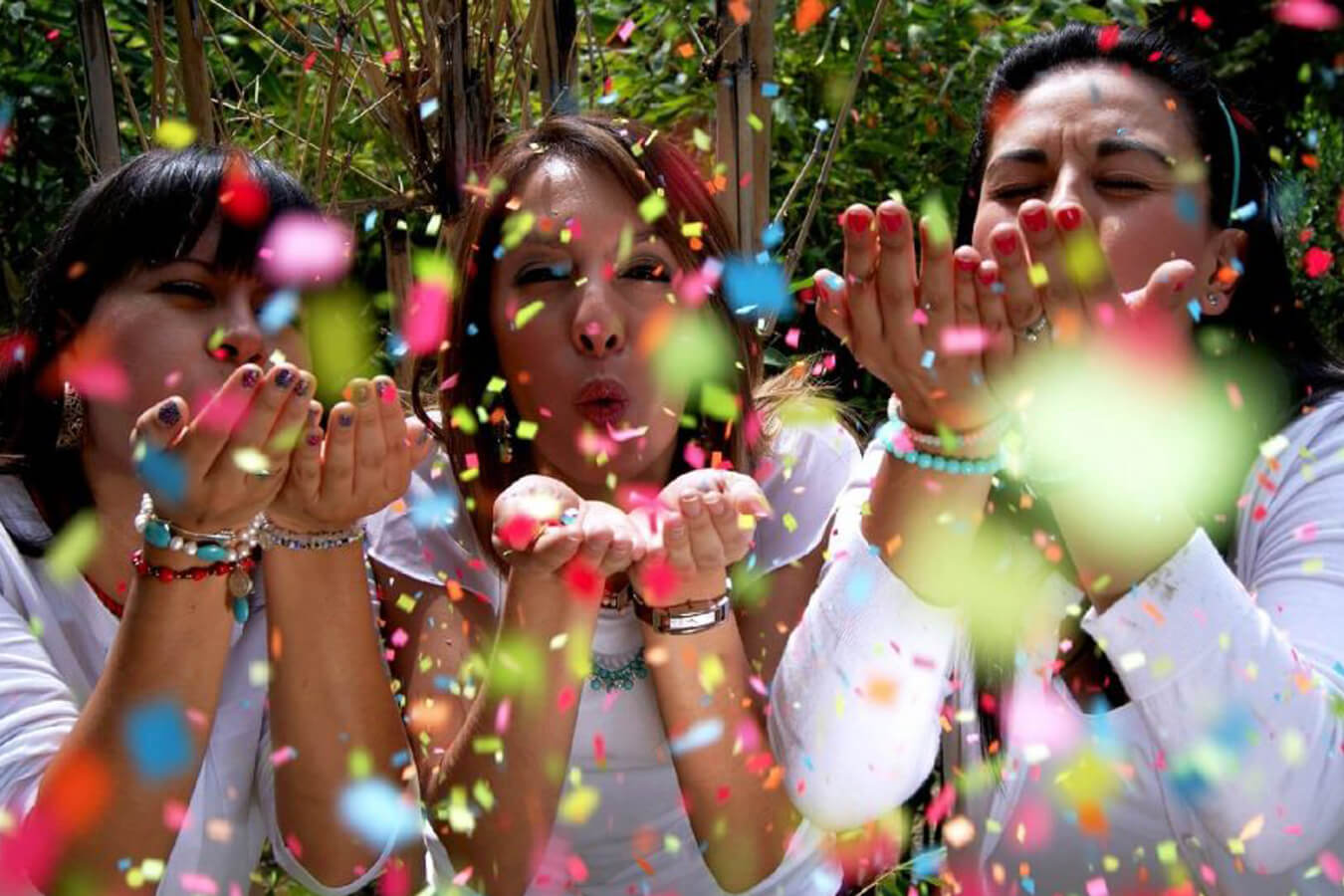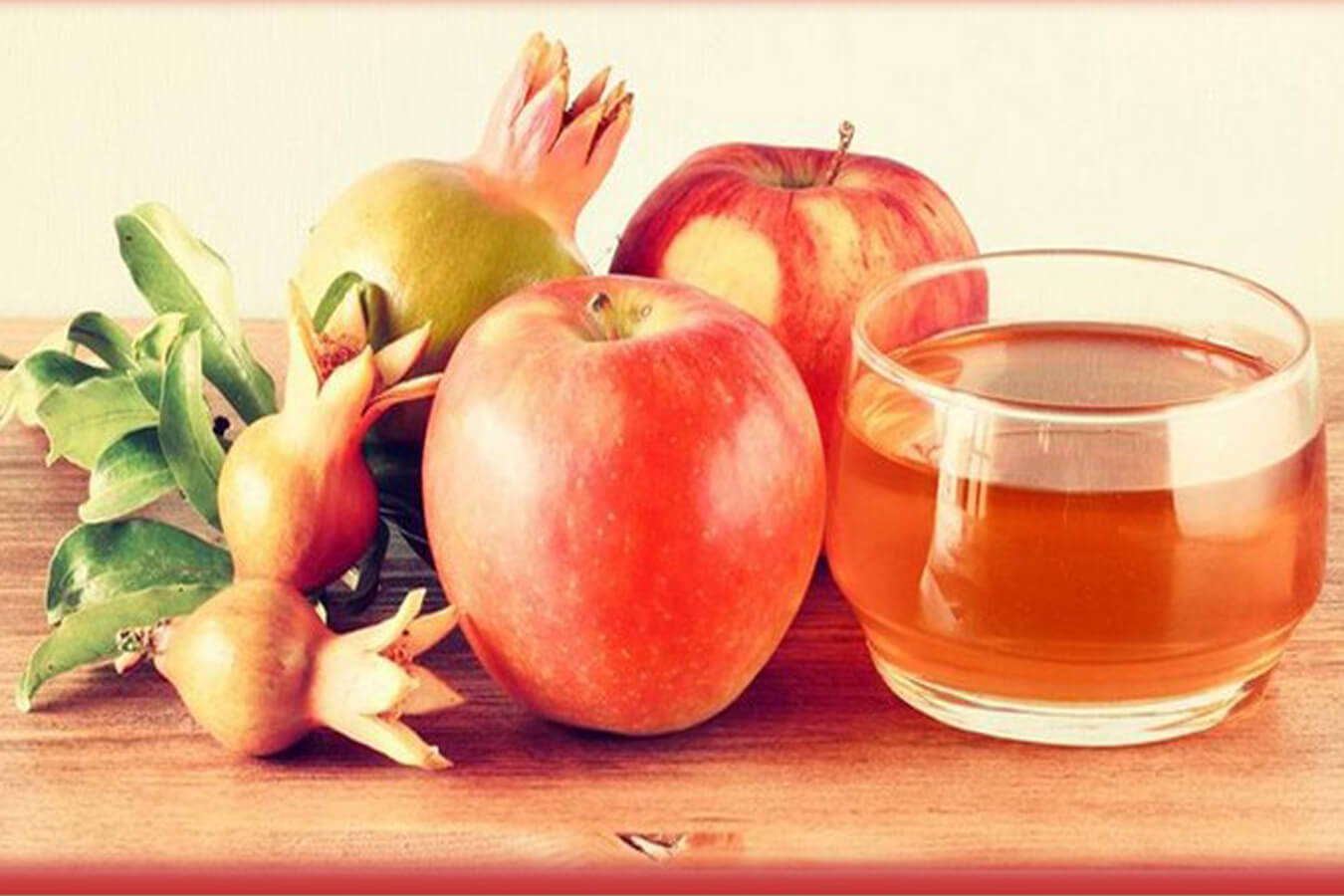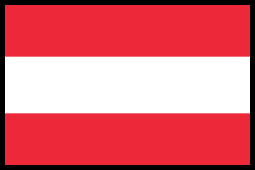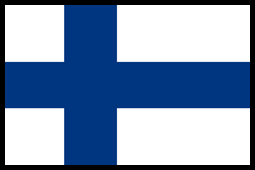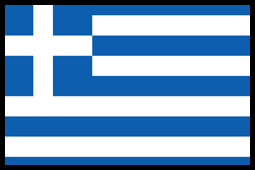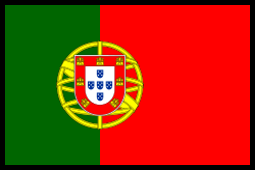Send Gifts In Europe / Germany / Gift Baskets to Dortmund

Send Gift Baskets to Dortmund, Germany
Are you looking for the best and perfect gift baskets to Dortmund, Germany for your loved one? If yes, you reached the right place.
Dortmund is a city in Germany’s North Rhine-Westphalia region.
The population of Dortmund: 585,813
The standard delivery method to Dortmund: 2 – 3 working days*
The express delivery method to Dortmund: 1 – 2 working days*
*Saturday and Sunday are not included as working days
Use Our Advice
We are here always at your service.
No Minimum Order
Each customer is important to us.
Shipping Information
We deliver all over Europe.
Discover Our Gift Baskets For Every Occasion
Holiday Gifts
Dortmund Overview
Dortmund is the eighth-largest city in Germany and the third-largest in North Rhine-Westphalia after Düsseldorf and Cologne. Over 588,000 people live in Dortmund as of 2021. It is the largest city in the region and home to over 5.1 million people. It is also the largest city in Westphalia, one of Germany’s most populated areas. It is the administrative, commercial and cultural hub of the eastern part of Ruhr Metropark and the second-largest city in the low German-speaking area.
Etymology
Dortmund was first mentioned in the Werden Abbey, which was built between 880 and 884. The Old High German text reads: “In Throtmanni liber homo Arnold viii den nob solvit.” According to this, there are a large number of different names, but they all go back to the same phoneme stem. It appears that their usage in the sources is also arbitrary and random.
The name of the city has changed many times throughout history: Trutmania, Thortmanni, Trotmunni 939, Tremonia 1152. It was finally Dortmund that came into use in the 13th century and remained its official name when it was granted market rights in 1264.
In the Middle 9th century, when the city had withstood a siege of 1200 knights led by the Archbishop of Cologne, it chose as its motto: “So fast as Dürpm” (High German: As fiercely as Durpheim).
The city used to be called by different names but is now internationally recognized as Dortmund, a name that comes from Germany. The abbreviation for the name of the city is, “DTM”, the IATA code for Dortmund Airport.
Early history
Essentially, the Sigiburg was a hillfort to the south of present-day Dortmund and it once overlooked the River Ruhr and its confluence with the River Lenne. Today, it is home to Hohensyburg castle which lies on top of its well-preserved remains. The hill fort’s origins are unknown but suspected to be from a Saxon era. It was taken over by the Franks under Charlemagne in 772 AD and retaken by the Saxons (possibly under Widukind) in 774 AD. The hill fort was then once again taken, this time fully, and is still in possession of the Franks. Archaeological evidence suggests that the Sigiburg site was also occupied during the Neolithic era.
Dortmund is a very old city, the papers first mention it back in the 880s. In 1005 it hosted religious meetings and in 1016 – imperial ones.
Middle Ages and early modern period
After a fire destroyed it in 1152, Frederick Barbarossa (the Holy Roman Emperor) had the remains of Dortmund rebuilt. He resided there in 1267 when Saint Mary’s Church was completed and three years later when St Reinold’s Church was finished. The historic crossroad, marketplace, and town hall in Dortmund made it an important trading center. Because of this it was assigned its own Imperial Free City status and was one of the first European cities with official brewing rights in 1293. Throughout the 13th – 14th centuries, it was the “chief city” of the Rhine, Westphalia, but also officially part of the Netherlands Circle of the Hanseatic League.
After 1320, the city appeared in writing as “Dorpmunde”. In the years leading up to 1344, King Edward I borrowed money from well-heeled Dortmund merchant families Berswordt and Klepping, after giving a royal crown as collateral. In 1388, the Count of Mark joined forces with the Archbishop of Cologne to feud against Dortmund. After 18 months, they reached an agreement that granted Dortmund some autonomy. The first Vehmic court was situated in Dortmund, but during the 19th century, its seat was moved to Arnsberg. Its last seat was in this city until 30 November 1814, coinciding with the end of The Holy Roman Empire. After Cologne was excluded after the Anglo-Hanseatic War (1470–74), Dortmund was made the capital of the Rhine-Westphalian and Netherlands Circle. This new position favored the foundation of one of Europe’s oldest schools in 1661 – Stadtgymnasium Dortmund.
Location
Dortmund is an independent city situated in the east of the Ruhr area, one of Europe’s largest urban areas (see also: megalopolis). It consists solely of 11 independent cities and four districts. Since Dortmund has some 5.3 million inhabitants it is ranked in size as the 14th most populous German city. As Dortmund’s city limits are large and border many other towns and cities, there is much variety in the types of people. This means the city has an eclectic mix of people who you will have a unique experience with. The following cities border Dortmund (clockwise starting from north-east) – Bochum, Castrop-Rauxel, Waltrop, Lünen, Kamen, Unna, Holzwickede, Schwerte. Westphalia is West Germany, and Dortmund is a place in North Rhine-Westphalia. Dortmund also borders the Ardey Hills in the south of Sauerland.
The Ruhr makes up the reservoir on the Hengsteysee next to the borough of Syburg in south Dortmund and between Hagen and Herdecke. This is one of the landmarks in North Rhine-Westphalia, Germany. Klusenberg, part of the Ardey range, is located just north of Hengsteysee and has an elevation of 254.3 m (834 ft) — which is the highest elevation in Dortmund. The Koepchenwerk pumped-storage plant is stocked with water from the Talsperre (reservoir) and sits at a relatively low elevation of 48.9 meters (160 ft).
The Emscher is a small river located in West Germany and has its source east of Dortmund near Holzwickede. The river flows west going through Dortmund. The Emscher river flows into the Rhine near these towns: Dortmund, Castrop-Rauxel, Herne, Recklinghausen, Gelsenkirchen etc.
Boroughs
Dortmund contains 62 boroughs with 12 distinct boroughs. The names are usually based on the most important neighborhood in that area. Three boroughs cover the area of the inner city (Innenstadt-West (City centre West), Innenstadt-Nord (City centre North), Innenstadt-Ost (City centre East)) and the remaining nine boroughs make up the surrounding area (Eving, Scharnhorst, Brackel, Aplerbeck, Hörde, Hombruch, Lütgendortmund, Huckarde, Mengede). Each of Berlin’s Stadtbezirks is assigned a Roman numeral and has a local governing body of nineteen members with limited authority. Most of the boroughs were originally independent municipalities but were gradually annexed from 1905 to 1975 for various reasons. With its long history of annexation, this has led to the population feeling very much “connected” with the borough they live in. Such a strong identification has led to a certain peculiar—the borough of Hörde was independent until 1928 and was still being identified as such in 1974.
Climate
Though the climate in Dortmund may be different from some other places, they are lucky to always receive moderate temperatures. The average annual temperature is just about 10˚ C (50º F). The total amount of precipitation is around 30 inches (800 millimeters) a year. Precipitation levels tend to be consistent throughout the year. In winter, steady rain is common (with some snow breakdowns), whereas isolated showers are more frequent in the summer.
Demographics
Dortmund was involved in a lot of trade during 19th-century industrialization. The city’s population skyrocketed when coal mining and steel manufacturing started up in 1904, seeing a 100,000 population for the first time in their history. The region around Dortmund, known as Ruhr, attracted up to 500,000 ethnic Poles and Masurians fleeing East Prussia and Silesia during the 19th century. Many of the immigrants in this area came from Eastern Europe, but some also immigrate from France, Ireland, and the United Kingdom. Most of their descendants today speak German as a mother tongue, and for various reasons, they don’t identify with their Polish roots and traditions. The only sign of their past is the existence of old Polish family names that are still in use today. Taking the fluctuation of wartime years into account, the population figures rose to 657,804 in 1965. As a result of the city’s post-industrial decline, the population fell to just under 580,000 in 2011. The population of Dortmund is 601,402 (2017) which makes it the eighth largest city in Germany, after Berlin, Hamburg, Munich, Cologne, Frankfurt, etc. In addition, it is the largest city in the Ruhr area.
Religion
There are a lot of different Christian religions in this world, but the two main ones as of 2014 were Catholicism (27.4% of the population) and Protestantism (49.9%). Dortmund also has representatives from Greek Orthodox Church, Serbian Orthodox Church, and Macedonian Orthodox Church. The Church of the Holy Apostles (Ντόρτμουντ – Dortmund) was the first Greek church in Germany to be founded because of an influx of “guest workers”. The New Apostolic Church is headquartered in Dortmund and has over 84,000 members in North Rhine-Westphalia.
The long-standing Jewish community in Dortmund has always been one of the largest outside of Kiel. You’ll find several families in this area that are celebrating their roots since there is plenty of beautiful history to explore. There are 3 synagogues in the city center, Hörde, and Dorstfeld. These have operated since the 1960s due to Islamic immigration. Dortmund has a large Muslim community with over 30 mosques.
Government and politics
Dortmund is a district-free city in North Rhine-Westphalia. This means that it does not belong to another general purpose local government unit, and is therefore not part of a Landkreis. Dortmund has had twelve districts since 1975, each with its mayor. The councils are only advisory, though.
Oftentimes, Dortmund is called the heartland of the Social Democrats because it is heavily governed by this party. During World War II (1933–1945), mayors were installed by the Nazi Party. After WW2, the UK occupation zone installed a new mayor and municipal constitution based on British cities. Since the end of WWII, the Social Democrats have enjoyed a plurality of voters in Dortmund except from 1999 to 2004.
Cityscape
Dortmund’s city center has a lot of contrasts. You can see old and new structures, for example, Altes Stadthaus or Krügerpassage with post-war architecture like Gesundheitshaus or Romanesque churches from the Middle Ages like the Reinold. The WWII bombings of the city left 98% of the city center in ruins. Reconstruction was done according to 1950s standards, but still respecting the old layout and naming of streets. The historical downtown of Dortmund is still recognizable. Parts of its medieval city walls are still intact, and the former salt trading route can be found e.g. in the Westen-/Ostenhellweg which bisects the middle of modern Dortmund to this very day.
Most of the city is filled with simple, modest post-war buildings. However, some pre-war buildings were reconstructed because of their historic importance. Some examples of “Wiederaufbauzeit” architecture (period after WWII) are now considered classics of modern architecture. Take, for example, the opera house.
Transportation
Road transport
– Dortmund is a major crossroads for the Autobahn system in Germany and Europe.Cycling
– Planning for cyclists in Dortmund is extensive. There is an extensive network of cycle paths that began back in the 1980s.Rail transport
– As with many communes in the Ruhr area, local transport is provided by a local company that runs buses within the confines of the city. The DB Regio subsidiary of Deutsche Bahn provides regional transportation and Deutsche Bahn, itself a public company carries out long-distance journeys all over Germany.Public transportation
– The public transport in this city includes a lot of buses and trains.Air transport
– Dortmund Airport is an airport that’s medium-sized and growing rapidly. It’s located 13 km east of the city center at the city limit to Holzwickede.Water transport
– Dortmund Harbour is the largest canal harbor in Europe and the 11th largest in Germany.
Economy
Dortmund has had to adapt since the decline of its 100-year steel, coal, and beer industries. The area has shifted to high-tech and industrial sectors, with robotics, biotechnology, microsystems technology, engineering, and more. With these advancements and the growing importance of all things digital in recent years, this region has become one of the most dynamic new-economy cities in Germany. According to the Innovation Cities Index published by 2thinknow in 2009, Dortmund was classified as a Node city.
Hundreds of SMEs are still based in and around Dortmund (often termed Mittelstand), many of them around the old trading sector. One of Dortmund’s main draws is its proximity to TU Dortmund. There are several medium-sized IT companies as well as digital startups, with some linked to the university. This all started in the 1980s when they opened Germany’s first technology center, now called Technologiepark Dortmund. TechnologiePark Dortmund, with more than 8,500 employees and 200 companies (including Boehringer Ingelheim and Verizon Communications) is one of the most successful technology parks in Europe. The city has a large number of research institutes, universities, and companies cooperating on the commercialization of science initiatives. This mostly concerns IT and software companies with around 12,000 employees based in Dortmund. Dortmund is the home to two of Germany’s top IT service providers – Adesso SE and Materna Group.
Dortmund is home to a number of insurance companies such as Signal Iduna, Continentale Krankenversicherung, Bundesinnungskrankenkasse Gesundheit (BIG direkt) and Volkswohl Bund. Recently the region has developed into a service sector and high-tech industry. Electric companies and transportation get a lot of attention for building IoT solutions but there are also successful companies in other industries that have made it work. Amprion and RWE-Westnetz (Electricity), Elmos Semiconductor, Rhenus Logistics (Logistics), Wilo, and Nordwest Handel AG – all of whom have their headquarters here. With a lot of companies with offices in Dortmund, such as Zalando, Daimler AG: EvoBus, RapidMiner, Gap Inc., and ThyssenKrupp- you’re sure to find opportunities for success.
Not only is Dortmund the headquarters of Century Media Records, a pioneering heavy metal record label, but it’s also the home to Sony Music. In August 2015, Sony bought Century Media for US$17 million.
Tourism
Tourism in Dortmund is a fast-growing economic factor every year. Every year new buildings open to accommodate tourism, new hotels open, and new attractions are added. Dortmund has seen a rise in modern culture and tourism since the mid-1990s. It became an industrial center in the 19th century but saw a recent revitalization of its cultural offerings. An important strategic step was the start of construction of the new Konzerthaus Dortmund, the reuse of vacant old industrial buildings like the Zollern II/IV Colliery, Kokerei Hansa, Dortmund U-Tower, and the strategic reorientation of the Dortmund Christmas market with over 300 stalls packed around a gigantic Christmas tree creation that stands 45 meters tall – reputed to be the biggest in the world. The Tourist Information Center is a great meeting spot for visitors because it’s right next to the U-Tower and provides tourist information about Dortmund. Dortmund is one of the most popular destinations in Germany with more than 1.450.528 (2017) overnight stays.
The majority of tourists are domestic visitors coming from Germany. The next most common destinations are the UK, The Netherlands, Austria, and Switzerland. Dortmund offers several attractions for businesses. WILO, Amprion next to Westfalenhallen and Borussia Dortmund all offer business tourism opportunities. The top 5 most visited attractions in Germany are Christmas Market, Signal Iduna Park, Deutsches Fußballmuseum, Dortmund U-Tower and Zollern II/IV Colliery. They were all visited by more than 3 million visitors.
Shopping
The Westenhellweg is a popular shopping destination- more than 13,000 visitors pass through it per hour. But the street is more than just a popular spot for shoppers: it’s also Germany’s most frequented shopping street from 2013 to this day. During the Middle Ages, Dortmund was the only free imperial city in Westphalia, because at that time. Here in this pedestrian-only area, some of the most reputable stores in the world have outlets. The area is bordered by Reinoldikirche and U Tower on the east and west respectively. The average rent in North Rhine-Westphalia’s retail and office space industry is one of the highest in Western Europe. Out of these proportions, 85% are H&M shops, Saturn outlets, Esprit stores, or Zara outlets while our NewYorker is only a mere ten percent. In 2009, the Thier-Galerie mall opened, with over 100 stores, including brands like Armani, Adidas, and Hollister.
3 more shopping malls, Karstadt, and Peek & Cloppenburg also occupy the Thier-Galerie mall; and can also be found here. During the welcoming month before Christmas, with its large and long-standing tradition, Dortmund’s extended pedestrian-only zone is host to Dortmund’s annual Christmas market. Known for its size and the incredible number of visitors (3.5 million), the Christmas markets are a popular sight in Berlin. And with more than 300 stalls, it is one of the most visited markets in the world.
Located close to the Dortmund concert hall is where the Brückstraßenviertel lies. The quarter is especially popular amongst young people, who fondly call it “Rue de Pommes Frites” (Brückstraße). The street has become an attractive shopping.
Kampstraße has existed parallel to the Westenhellweg and Ostenhellweg for a long time but has now become a part of the grand boulevard of specialist stores. Right next to Kampstraße is Kleppingstraße – a small twisty shopping street with a high concentration of restaurants. This street is located between Ostenhellweg and Neutor Street to Wall ring, where you can find expensive shops like van Laack and Marc Cain.
Port and logistics
One of the things that make Dortmund such a great place to work is its extensive variety of professional fields. And while it’s also famous for its university and football team, these are not even its number one attraction. Currently, there are over 900 companies in Dortmund working in the logistics sector alone – and that is yet another reason why people love working here. Dortmund Port which terminates the Dortmund-Ems Canal connecting Dortmund to the North Sea is one of Europe’s biggest canals and has 10 docks, with 11 km of pier length. The variety of activities taking place at the Fraunhofer Institute Material Flow and Logistics (Fraunhofer Society) has led to a wide skillset. Not only are they advanced with digitalization, but they have also begun to focus on logistics. Industry-based initiatives, such as the Hybrid Services in Logistics initiative and the efficiency cluster LogistikRuhr, along with pilot projects, such as Industrial Data Space and the Dortmund Mittelstand 4.0 Centre of Excellence are beneficial to your company. The headquarters for the Digital Hub for Logistics of the Federal Ministry for Economic Affairs and Energy is in Dortmund. Part of their setup includes a partnership with Hamburg.
Education
Dortmund has 160 schools and also 17 business and technical colleges. 85,000 pupils at these schools complete primary education, then they have the choice to attend Hauptschule, Realschule, or Gymnasium. The Stadtgymnasium Dortmund has been around since 1543, which makes it one of the oldest schools in Europe. One particularly popular school that offers bilingual education is the Leibniz Gymnasium in Kreuzviertel. This international school has affiliations with the European Council of International Schools. The Goethe Gymnasium was established in 1867 as the first girls’ school in the city. Starting in 2009, it also became a sports school, focusing on training for many sports.
Culture
This city has a long tradition of music and theatre, which is no surprise given that the orchestra was founded in 1887, with its new name coming after World War II. The first opera house was built in 1904, destroyed in World War II, and opened again in 1966 as Opernhaus Dortmund. The Konzerthaus Dortmund is operated by Theater Dortmund in cooperation with different locations and also since 2002. The theater is also listed in the ECHO list as one of the 21 most outstanding concert halls in Europe.
DownBeat magazine has awarded the Domicil Jazz Club as one of “The 100 Best Jazz Venues on Earth”
There’s a lot of creativity going on at the Dortmund U-Tower and in the surrounding Union Viertel. It’s partly thanks to “Creative. Quarters Ruhr,” an initiative that seeks to turn the area around U-Tower into a hub for creative industries in Europe within three years.
Dortmund has a very famous cabaret stage, the Cabaret Queue, which is located next to lake Phoenix. Some other famous cabaret stages are Fletch Bizzel and the theatre Olpktetal. One of the premier cabaret events is the RuhrHOCHdeutsch. It’s one of Germany’s most successful and attracts talent from around the world.
Dortmund is also famous for its Christmas market. The number of visitors to Dortmund’s Christmas market has been increasing in recent years and in 2017, over THREE AND A HALF MILLION people visited the 300 stalls around a gigantic Christmas tree creation that stands 45 meters tall. This market is especially famous for its handmade ornaments and delicacies, mainly ham from Westphalia.
Festivals and nightlife
This city has a long tradition of music and theatre, which is no surprise given that the orchestra was founded in 1887, with its new name coming after World War II. The first opera house was built in 1904, destroyed in World War II, and opened again in 1966 as Opernhaus Dortmund. The Konzerthaus Dortmund is operated by Theater Dortmund in cooperation with different locations and also since 2002. The theater is also listed in the ECHO list as one of the 21 most outstanding concert halls in Europe.
DownBeat magazine has awarded the Domicil Jazz Club as one of “The 100 Best Jazz Venues on Earth”
There’s a lot of creativity going on at the Dortmund U-Tower and in the surrounding Union Viertel. It’s partly thanks to “Creative. Quarters Ruhr,” an initiative that seeks to turn the area around U-Tower into a hub for creative industries in Europe within three years.
Dortmund has a very famous cabaret stage, the Cabaret Queue, which is located next to lake Phoenix. Some other famous cabaret stages are Fletch Bizzel and the theatre Olpktetal. One of the premier cabaret events is the RuhrHOCHdeutsch. It’s one of Germany’s most successful and attracts talent from around the world.
Dortmund is also famous for its Christmas market. The number of visitors to Dortmund’s Christmas market has been increasing in recent years and in 2017, over THREE AND A HALF MILLION people visited the 300 stalls around a gigantic Christmas tree creation that stands 45 meters tall. This market is especially famous for its handmade ornaments and delicacies, mainly ham from Westphalia.
Cuisine
German food is traditionally characterized by dishes like Pfefferpotthast, Balkenbrij, Heaven, and Earth. There’s also Currywurst, Pumpernickel with Griebens (bread spread with lard)
During the summer, people enjoy Dortmunder Salzkuchen (caraway fruits, onions, salt, and meat put inside a bread bun). Alternatively, people love Reibekuchen in the winter (potato pancakes served with apple sauce).
One of the oldest breweries in Dortmund is the Gilde Brauerei Malzfabrik, which was founded by a group of brewers over 550 years ago. This brewery was founded around the Old Market in Dortmund. Dortmund is famous for its pale lager beer called Dortmunder Export. Nicknamed “Dortmunder”, it got popular with industrial workers and resulted in Dortmunder Union becoming Germany’s largest brewery and Dortmund having the highest concentration of breweries in all of Europe. Most of the beers out there are from traditional and popular brands such as Dortmunder Actien Brauerei, Bergmann Bier, Kronen, Union, Brinkhoff’s, Dortmunder Hansa, Hövels and Stifts.
“Stösschen” is a type of beer that comes in small glasses. A “Stösschen” is 0.2 liters and can be drunk in two sips. The idea of a Stößchen came about in the 19th century when people would have to wait at the level crossing to cross the Nordstadt Railway Line that divided the city center from the Nordstadt district. Alternatively, those who didn’t have time or didn’t want to pay could take a detour over bridges and down alleys on foot and arrive at their destination. Some local innkeepers in Dortmund saw the potential of serving quick drinks to people with limited time, which then became a tradition.
The Dortmunder Tropfen Schnaps is a type of liqueur that is flavored with herbs or spices and traditionally drunk neat as a digestif. Drink it after meals to help ease digestion and settle your stomach.
Sports
As the biggest city of sports in Germany, Dortmund is home to both the German Handball Association and the professional handball league. Earlier this month, they are hosting their annual congress in the city.
Football
– Dortmund is the home to the Borussia Dortmund football club, which is one of Germany’s most successful sports teams.Handball
– Borussia Dortmund, which also has a top football team, has a women’s handball team in the first Bundesliga.Table tennis
– Borussia Dortmund has also established a table tennis team that plays in the second Bundesliga.American football
– One of the many American football teams in Dortmund. Established on May 22nd, 1980Ice hockey
– Eisadler Dortmund is an ice hockey club in the city that plays at the Strobelallee. It’s in Eissportzentrum Westfalenhallen, an indoor sporting arena.Basketball
– The basketball club in the city is just in the second division in Germany. The team of the city competes in its respective second German divisions.Baseball
– Dortmund Wanderers, a city baseball club based in Dortmund, Germany, is ranked in the top league of German professional baseball clubs.
What is Dortmund known for?
Dortmund is a really interesting city, with a diverse history. Rebuilt after WWII and focused on the future, you’ll find the perfect balance of tradition & innovation. The soccer team here is famous, but beer culture and the industry is also huge parts of Dortmund’s heritage.
13 Top-Rated Attractions & Things to Do in Dortmund
Start Your Dortmund Adventure in the Alter Markt and Altes Stadthaus
The Alter Markt is the most historically significant part of Dortmund’s Old Town. Starting in the 12th century, the area became a huge marketplace, eventually coming to serve as a huge connection point for all the tradesmen in town. This historic area of Boston remains as popular as ever, with an abundance of shops, galleries, and restaurants to explore. The modern way of life is perfectly reflected in its architecture.
St. Reinold’s Church
Be sure to visit St. Reinold’s Church (Reinoldikirche), towering over the city at 104 meters tall. It was started in the 13th century and completed in 1454 and is named after Dortmund’s patron saint, Reinold.
Take a Tour of the Zollern Colliery
One of the eight ‘former industrial sites that form part of the Westphalian State Museum of Industrial Heritage, the Zollern Coal Mine has a history of over 400 years. As one of its outstanding features, it is worth mentioning its gorgeous architecture, which has been preserved over the years – redbrick being dominant in color. One of the most attractive entrances in Machine Hall is the Art Nouveau, which was built in 1904.
Wander Westfalenpark
Dortmund’s Westfalenpark is a bit more than 175 acres of green space and one of the city’s largest, most popular parks. The park is home to several attractions, including a 212-meter-high TV tower known to locals as the Florian Tower (Florianturm). Its rotating restaurant at 138 meters has fabulous views of the city.
Spend the Day with the Kids at Rombergpark & Dortmund Zoo
Rombergpark is a popular park that’s located just a few blocks away from Westfalenpark. It was created for a wealthy family in the 1820s but taken over by the city in 1927 and since given to the public. There are two main attractions in the city that any visitor would be remiss to miss when visiting: the Zoo Dortmund and Rombergpark Botanical Garden.
Take a Side Trip to Hohensyburg
The Hohensyburg, a castle complex dating back to the 8th century, is located around 12 kilometers south of Dortmund. It stands on a wooded crag overlooking the Ruhr Valley. The castle ruins you see today date from 1100 and consist of two large keeps, living quarters, and remnants of the old walls. The newest addition is the war memorial which was added in 1930 to commemorate WWI’s fallen soldiers.
Dortmund U Tower and the Depot
Dortmund is a big city with an industrial past as well as several major attractions focusing on its rich cultural heritage. The original Dortmund U Tower is a huge former factory that has been completely transformed and turned into a hub of artistic and creative activity, the latest interpretation in the company’s long history.
All Aboard the Transport Museum and Mooskamp Station
If you love vintage vehicles, make sure you stop by Dortmund’s Local Transport Museum for an excellent collection of old trams. The history of transportation in Dortmund is on display at Mooskamp Station, where visitors can take a look into the early 1900s. These old trams date back to the early 1900s and used to travel through the Rhur Valley from Dortmund.
Explore the Port Authority Building and Museum
The city of Dortmund in Germany is located on the River Emscher near the River Ruhr, which facilitates its role as a major hub for transportation through the water. The Dortmund-Ems Canal, the world’s busiest artificial waterway, starts here. To cope with constantly rising production demands, it was dug and completed in 1899.
Tour Haus Dellwig – Haus Dellwig
also known as Wasserschloss Haus Dellwig — is a moated mansion that’s been registered in city records since the 12th century. These days, it’s turned into a museum full of exhibits about Dortmund’s history. Highlights include restored rooms that look just as they would have back in the day, such as the kitchen and various living quarters. You can also find workshops such as a cobbler’s shop and bakery on site.
Wasserschloss Haus Rodenberg
Renaissance-style architecture is outstanding and could never be denied. An example of it would be Wasserschloss Haus Rodenberg, which is surrounded on three sides by a moat and overlooks a lake in the center of a park. One of the oldest buildings in town, this historic staircase has been serving as a source of inspiration for artists, writers, and architects for centuries. This can be seen in its numerous reconstructions and different configurations throughout the decades.
Things to Do in Dortmund for Kids
Dortmund is a great city to visit with kids. It has plenty of things to do, both designed specifically and custom designed for children. With many interesting exhibits, the Adlerturm Museum is very much worth a visit with family and friends. The museum will provide plenty of fun for those who are looking for history-related activities outside of their classrooms.
German Football Museum
German Football Museum is a great way to experience a game of soccer in an immersive, educational environment. It’s one of the most popular museums in the city and is sure to provide many hours of entertainment for all. Exhibits explore the sport’s economic, cultural, and social significance as well as its entertainment value. Along the way, you’ll learn about fan culture and how it can be used to model healthier behaviors.
Send Gift Baskets To Dortmund
Sending gifts to Dortmund is easy with Walwater Gifts in Dortmund. Walwater Gifts offer a variety of gifts for delivery in Dortmund. No matter who you are buying for or what the occasion – Christmas Gifts to Dortmund, Birthday Gifts to Dortmund, Wedding Gifts to Dortmund, New Baby Gifts to Dortmund, Anniversary Gifts to Dortmund, or Sympathy Gifts to Dortmund, we have the perfect gift.
Walwater Gifts Holiday Gifts in Dortmund
As we know, People in Dortmund celebrate many different holidays that Walwater have a gift solution for each of them. We can deliver Christmas Gifts to Dortmund, Valentine’s Day Gifts to Dortmund, Mother’s Day Gifts to Dortmund, Father’s Day Gifts to Dortmund, Birthday Gifts to Dortmund, Easter Gifts to Dortmund, Holidays in Dortmund, Corporate Gifts to Dortmund, Business Gifts to Dortmund, Online store in Dortmund, etc.
Walwater Gifts is offering Express gifts delivery Gifts to Berlin, Gifts to Bielefeld, Gifts to Bonn, Gifts to Bremen, Gifts to Chemnitz, Gifts to Cologne (Köln), Gifts to Darmstadt, Gifts to Dortmund, Gifts to Duisburg, Gifts to Düsseldorf, Gifts to Frankfurt or anywhere else in Germany.
Delivery information for Dortmund
Standard duration (without weekends and public holidays):
*4-5 business days (Monday – Friday).
Express duration (without weekends and public holidays):
*1-2 business days (Monday – Friday).
Gift Orders received by 12 am (+1 GMT) Walwater Gifts utilize several different shipping methods, always trying to find the best solution for you. Ground shipping 4-5 business days.
Please note that parcels in Dortmund will not be delivered on Saturdays, Sundays, or Holidays.
Walwater Gifts Shipping information
When you provide us with complete and accurate delivery information, your gifts will be delivered promptly and you will be spared re-delivery charges. Please check your delivery address carefully. Incorrect or incomplete addresses will result in a € 20,00 handling charge in addition to all charges accrued for re-shipping each item. We cannot ship to P.O. Boxes.
Gifts to Hospitals or Hotels
Please confirm the recipient is still in the hospital/hotel before scheduling the delivery. When placing a gift basket order for delivery to a patient/guest please make sure that you include as much information about the patient’s/guest’s location as possible. Such as patient/guest’s name, Hospital, Department (i.e., Maternity), and Room No. and the Hospital’s complete address.
Shipping restrictions:
Based on the reason that we are sending our gift baskets to Dortmund from our European office, there are no Shipping Restrictions. Therefore this all includes Walwater Gifts which contain alcohol brands gifts to Dortmund.
Cities we deliver to Germany
Walwater Gifts deliver all over Germany. At Walwater Gifts to Dortmund, we have extensive experience in sending gift parcels all over the world. However, each country has unique Customs Regulations and delivery times. Please feel free to contact us if you have any questions or need assistance placing your order online.
Delivery of our Gift Baskets to Europe
We deliver our gifts & gift baskets everywhere from small towns to major cities to 25 European Countries. Walwater Gifts delivers gift baskets to Austria, Belgium, Bulgaria, Croatia, Czech Republic, Denmark, Estonia, Finland, France, Germany, Greece, Hungary, Ireland, Italy, Latvia, Lithuania, Luxembourg, the Netherlands, Poland, Portugal, Romania, Slovakia, Slovenia, Spain, Sweden.
10 Excellent Reason For Send Gifts In Europe
- We are a European provider with delivery to 25 European countries
We ship our gifts to European Union countries, such as Austria, Belgium, Bulgaria, Croatia, Czech Republic, Denmark, Estonia, Finland, France, Germany, Greece, Hungary, Ireland, Italy, Latvia, Lithuania, Luxembourg, the Netherlands, Poland, Portugal, Romania, Slovakia, Slovenia, Spain, Sweden.
- Walwater Gifts is an original gifts manufacturer, without a middleman fee
SendGiftsInEurope is an original gifts producer, every gift is hand-made in our warehouse
- We have more than 10 years of experience
For more than 10 years we do our best to keep all our customers happy and satisfied
- Fast delivery
Deliveries throughout the European Union from our warehouse, resulting in faster delivery times
- Low shipping charges
Due to our central location in Europe, we provide low shipping charges for Europe and we guarantee no hidden delivery costs in our prices
- All our Gift Baskets contain well-known trademarks products
Selecting only the finest brands, no supermarket food brands because we believe gift baskets should be something special
- We test all wines and foods before we put them in our gifts
All our wines are tested and approved by the management and the staff (no, we’re not constantly drunk, but a glass or two of wine is perfect for inspiration)
- Branded gifts
Walwater Gifts may offer branded gifts. We can customize the entire gift with your company logo, name, ribbons, and more
- Additional gifts available – add ons
We understand that we cannot always fit all needs which is why we offer additional gifts for each gift basket in our range. Add as many bottles of wine, Teddy bears or other gifts with no extra shipping charges – personalize it! And we have free cards!
- Gift baskets for every occasion
SendGiftsInEurope offers gifts & gift baskets for every holiday and occasion in Europe
Sign Up for exclusive offers
We proudly accept




